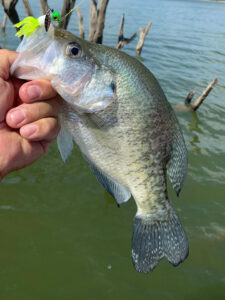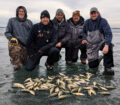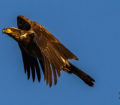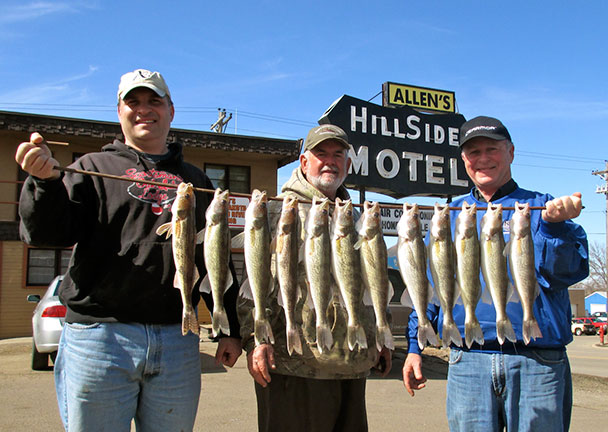By Bob Jensen
Fishing the Midwest Fishing team

A plastic bait on a jig will get a crappie to bite anywhere.
Those of us who have fished a long time have seen many changes and advancements in the equipment and the baits that we use when we’re trying to catch a fish. One of the changes that has affected many of us is the development of plastic baits and their place in the world of fishing. It wasn’t so long ago that many fishing guides or walleye tournament contestants, when they had to catch fish, were adamant that live bait was the ticket.
Today, that’s changed. Plastic baits have become very popular and are often effective for putting fish on the end of our line. There are several reasons for that.
Plastic baits offer many advantages over live bait. Live bait requires care. Modern aerated minnow buckets do a good job of keeping minnows lively, but nonetheless, effort is required. There are times when some species of minnows or leeches are hard to find, and some states have rules regarding minnow transportation. Plastic bait doesn’t require special care. It will be useful for many, many days on the water.
Plastic bait comes in a large variety of shapes, colors, and scents. Live bait doesn’t. A large variety of shapes and colors is a big advantage. There are times when a particular color or shape will be more productive.
In addition to the variety offered by plastic baits, they last longer on the hook. A jig/minnow/leech/crawler worked along a weedline in the summer will certainly catch fish, but will also be attacked by panfish. So will a jig/plastic combo. The difference is that the jig/plastic will withstand the frequent panfish pecks. And live bait won’t stay on the jig nearly as long as plastic when snap-jigging through and around vegetation. The jig/plastic allows for a lot more fishing and a lot less re-baiting.
Walleye anglers have learned that in the summer, a spinner rig tipped with a plastic crawler trolled behind a bottom-bouncer is an efficient way to catch walleyes. A spinner rig and live bait will do the job, but perch and sheepshead will rip the live bait off frequently.
Again, with plastic your bait is in the water more of the time. Additionally, those walleye anglers have discovered that there are times when an orange or chartreuse plastic crawler will be much more productive than the real deal.
For just fish catchin’, a Rage Grub on a 3/8th ounce jighead fished with a slow, steady retrieve will catch any predator fish in the area. White, chartreuse, or green pumpkin Grubs worked around mid-depth structure or along a weedline will catch bass, pike, and walleyes.
2022 Bassmaster Rookie of the Year Jay Przekurat learned at a young age that plastic baits needed to be a significant part of his bass-catching arsenal and has become very proficient with all sorts of techniques that utilize plastic. He has supreme confidence in a 4” Rage Bug rigged on a jig or Texas-Rig. Plastic baits enable an angler to present a bait to a bass in virtually any situation: Deep water or shallow, heavy or sparse vegetation, spring, summer, fall and winter.
Plastic baits, like any bait, won’t catch fish everywhere all the time, but they will catch fish anywhere most of the time. If you want to catch more fish, you should include plastic baits in your fishing toolbox.

















